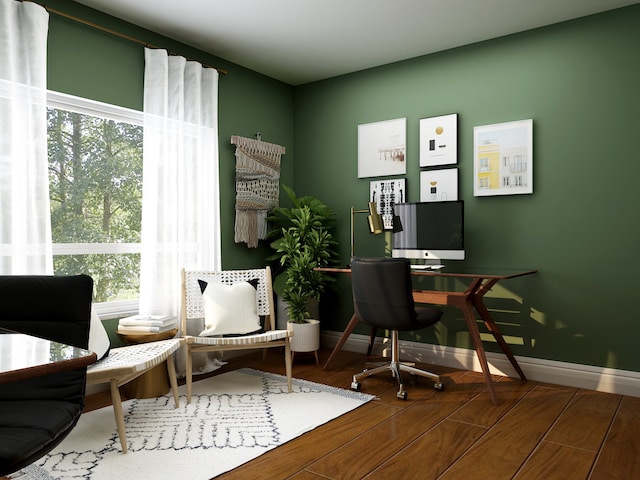Tiny homes have been gaining in popularity year over year. A tiny home, which can be stationary or mobile, is often defined as a home with 400 square footage or less. These homes are great for simplicity and sustainability and oftentimes call to those with a nomadic lifestyle. If you have a tiny home, especially a mobile one, you can live anywhere you want, but these tiny homes can come with big insurance issues.
Insurance for tiny homes is a challenge for many providers. This is because these miniature dwellers can do so much more than a common house. Many are built for mobility, but not all of them. If you need tiny home insurance, no common coverage simply applies to your needs. There are solutions for you. Your tiny home, how it was built, and what you intend to do with it will all impact where you look for insurance coverage.
Understanding home insurance for tiny homes
Tiny homes can be problematic for a home insurance company. Stationary tiny homes are easiest to insure, but a provider will want assurances that the home is built to code. If you’ve built the miniature dwelling yourself, odds are the insurance provider will be disinterested in helping you out. For most tiny homes, if it’s not certified by the National Organization of Alternative Housing (NOAH), your insurance provider will not cover it. If you did get your tiny home built by someone who was NOAH certified, and even if it can move — as long as you don’t intend to move it more than once a year, you may be able to get a mobile and manufactured home policy.
If you intend to move your mobile tiny home frequently, most insurance providers will classify the dwelling as something similar to a recreational vehicle. However, they won’t insure you unless your home is certified by the Recreational Vehicle Industry Association (RVIA). If you have that certification, you can get insured under an RV policy, which protects the small home, whether parked or moving.
If you own a tiny home not certified by either of these organizations, getting insurance is difficult, but you’re not out of luck. These homes have been trending, and many companies have created specific policies that can be tailored to your tiny home’s specific needs. You still may need to prove that the wiring and plumbing are up to code.
Factors affecting tiny home insurance
Various factors can influence insurance for tiny homes. What type of coverage you need, whether it’s available in your area, and your premiums can all change greatly depending on the situation.
- Size and Construction: Insurance providers require a specific certification, which will require your tiny home to be a specific size, and built to a particular standard.
- Location and Mobility: If you can move your tiny home, it has added risk and liability while on the road. Also, different locations can impact the cost to be insured, whether the home is mobile or stationary.
- Value: Like all things, the more valuable it is, the more it will cost to insure.
- Liability Coverage: This covers you if someone is injured on your property or if you cause damage to someone else’s property. This is crucial, especially if your tiny home is mobile.
- Local Regulations and Building Codes: The local regulations in your area can also impact your ability to insure your tiny home. Some insurers may require proof that a tiny home meets local building codes before offering coverage.
For the most part, your tiny home will be covered much like an RV. Your liability would cover road collisions or accidents, but your premiums would be higher as a result. Coverage for tiny homes is getting easier to find over time, but you may have to search more than expected for proper coverage.
How to get tiny home insurance
These steps will help you get insurance for your tiny home.
- Understand Your Needs: You’ll want to start with whether your home is stationary or mobile. You’ll want to know the value, including all your belongings inside, and whether there are local regulations or risks to consider.
- Research Suitable Insurance Types: If you have a NOAH-certified tiny home, you could get it insured at most places. If it is RVIA certified, RV insurance is an option for you. Otherwise, you might need specialized tiny home insurance.
- Request and Compare Quotes: It’s always important to compare quotes. Pay attention to the price, scope of coverage, policy limits, deductibles, and exclusions.
- Speak With Insurance Agents: Don’t hesitate to ask questions when speaking with insurance agents. Does the policy cover the total replacement cost? How does the policy handle personal property coverage? Is liability coverage included? What is the claims process?
- Review and Purchase: The cheapest policy isn’t always the best one; you want something that offers maximum coverage for your situation.
- Reassess Regularly: It’s never a bad idea to consider whether your insurance coverage is adequate based on your situation.
Tiny homes are a growing trend, so many insurance places are becoming increasingly familiar with how to help people looking to get insured. If one place can’t help you, don’t hesitate to ask if they can recommend a place that might. You’ll find the insurance you need for your tiny home if you exercise patience and perseverance.
Insurance is an important aspect that protects any large purchase or investment. You want to ensure that if a disaster befalls your home, your insurance company will help you recoup some of that loss. You must contact providers and find coverage if you own a tiny home. While it’s not always easy to find insurance for tiny homes, it is becoming more accessible as time marches on.




